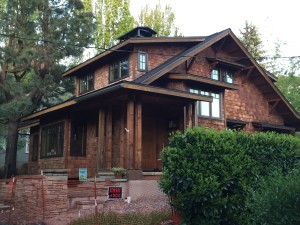1. Do I have to go through design review for interior remodels? No
2. Can I add on to my house? Yes
3. Can I choose my exterior paint color? Yes. City Code 9.0500 defines historic property alterations as “significant” change to the exterior of the historic resource and states that “maintenance is not considered alteration of a historic property.”While the City does not regulate paint color, property owners receiving financial incentives for historic rehabilitation may be subject to review of paint color.
7. Could I get incentives without being in a historic district? Being in a historic district saves you the time and expense (several thousand dollars) of trying to get your house listed individually on the National Register. Historic districts have a value, because of their “ensemble” nature, that is distinct from individually listed properties. Many properties in a district contribute to the historic value of the area but might not be eligible for individual listing.
8. What do “historic contributing” and “historic non-contributing” mean?
Properties in a historic district are categorized in three ways. “Historic contributing” means that the property contributes to the district
because of its age (50 years or older) and relatively intact historic architecture. “Contributing” status could also reflect past ownership of historic significance (such as the house once owned by Sen. Wayne Morse in our district). Close to 70 percent of the properties in the proposed historic district are categorized as historic contributing.
A historic, non-contributing property meets the 50-year threshold but because of major changes to the exterior, is not recognizable as being from any particular era. That category represents about 19 percent of the district.
Non-historic, non-contributing properties make up about 11 percent of the district. Some of these properties are nearing the 50-year threshold and have the architectural integrity to be considered historic contributing.
See District_Map map to see how many of our district’s properties were at least 50 years old at the time of the nomination.
13. What are the rules governing historic districts? The State requires that local governments protect properties listed
on the National Register of Historic Places. The Eugene City Code lists the requirements, which come from the Secretary of the Interior’s guidelines. Code language often refers to meeting requirements “to the extent possible.” Eugene_CityCodes. For a practical explanation of how the historic property alteration review process works in Eugene, see below*.
14. Is a review of my plans going to delay the permit process? According to the City of Eugene, the historic alteration review usually occurs first, followed by the building permit process. In practice, the review of all plans typically takes a total of 40 days or less. During that period, the owner may also wish to apply for City loan funds that are available for historic renovations.
*What will happen to your proposed remodel or addition when our area becomes a historic district? The City of Eugene’s pertinent code is EC 9.8175 – Historic Property Alteration Approval Criteria. Because the code deals with aesthetics, the standards are subjective. The code seeks to maintain historic significance but it doesn’t insist on absolute preservation and frequently uses phrases like “to the extent possible.”
The code’s reasonable level of regulatory review means we have the ability to preserve the quality of our area.
When the South University Historic District is placed on the National Register, the City will review plans to significantly alter a structure within the district. The standards set out in the City Code are based on the Secretary of the Interior’s Standards for Rehabilitation.
Copies of the City of Eugene’s Advisory Design Guidelines for Historic Residential Properties were distributed to all homes in the proposed South University Historic District.
The city has the authority to approve, deny, or approve with conditions, any application that would significantly alter a building in a historic district. The City’s decision can be appealed, but no one has done so since the City started the review process some 25 years ago. Click here for one family’s experience with Eugene’s Historic Property Alteration Approval Criteria.

